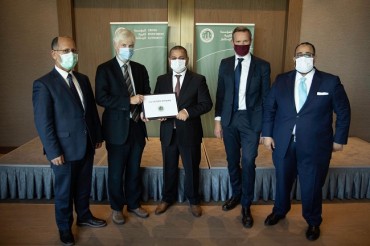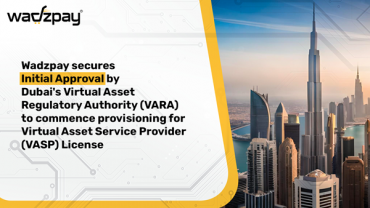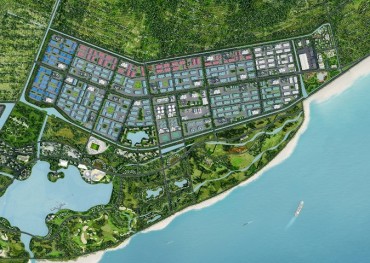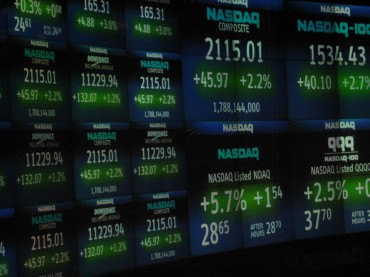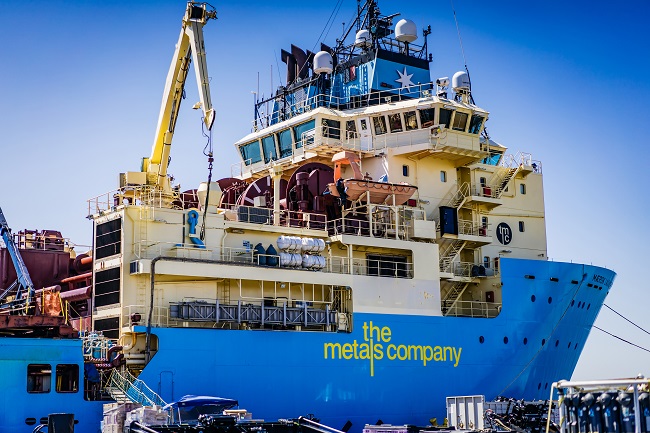
The Metals Company is an explorer of lower-impact battery metals from seafloor polymetallic nodules, on a dual mission. (image: The Metals Company)
- Commissioned by TMC, Benchmark Mineral Intelligence assessed the impact of mining on terrestrial carbon sinks in top nickel and cobalt producing regions
- In 2022, 75% of the world’s cobalt production came from the Democratic Republic of the Congo (DRC) and 50% of the world’s nickel production came from Indonesia. Both DRC and Indonesia are megadiverse countries and conservation hotspots
- The carbon model developed by Benchmark quantifies the magnitude of carbon stocks and carbon sequestration services loss due to mining of cobalt in the region of Katanga, DRC and nickel in Sulawesi, Indonesia
- The study finds that 1 kg of nickel mined from saprolite and limonite ore in Sulawesi removes forests containing carbon stock equivalent to 7.0 and 9.4 kg of CO2e, and 1 kg of cobalt mined in Katanga removes 3.6 kg of CO2e. Resulting vegetation change also causes carbon sequestration services loss of 4.8g and 6.5g of CO2e respectively for nickel, and 9.3g of CO2e for cobalt per year.
NEW YORK, Nov. 29, 2023 (Korea Bizwire) – TMC the metals company Inc. (“TMC” or “The Metals Company”), an explorer of lower-impact battery metals from seafloor polymetallic nodules, today announced that leading lithium-ion battery supply chain research firm, Benchmark Mineral Intelligence (“Benchmark”), has completed an independent third-party study of how terrestrial cobalt mining in the woodland forests of the Democratic Republic of Congo (DRC) and nickel mining in the rainforests of Indonesia impact terrestrial carbon sinks. The full study can be downloaded here and a summary document here.
While awareness is growing of the direct carbon emissions from metals mining and processing, lifecycle assessments do not often assess the impacts of land-use change on carbon sinks in specific regions. The new Benchmark study complements their earlier independent third-party lifecycle assessment where the environmental impacts of TMC’s planned NORI-D Polymetallic Nodule Project are compared to the lifecycle impacts of key-land based production routes for nickel, cobalt and copper [see full report ; summary ]. Benchmark focused on DRC (75% of the world’s cobalt production in 2022) and Indonesia (50% of the world’s nickel production in 2022) and set out to quantify the loss of carbon stocks and sequestration services caused by the mining of cobalt in the region of Katanga, DRC and nickel in Sulawesi, Indonesia. Benchmark data was used to select five of the largest mines in each region as case studies, which then underwent Geographical Information System (GIS) mapping analysis to look at changes over a 14-year period. Habitat types were defined using the Land Cover Classification System to assess the changes and impact that mining had on regional carbon stocks during that same period.
“Forest ecosystems play a critical role in the carbon cycle, yet when it comes to sourcing energy transition metals from forested regions, the impacts on carbon stored in trees, plants and soils, and their ability to draw down carbon from the atmosphere unfortunately often go unaccounted for, along with the additional ecosystem services they provide and the loss of biodiversity they host” said Erica Ocampo, Chief Sustainability Officer for The Metals Company.
“This new study provides insights to help us understand the relative benefits of developing the nodule resource in a region devoid of trees or plants, and with orders of magnitude less life than would be found in biodiverse forest ecosystems being impacted by mining today.”
In both Indonesia and the DRC, the extraction of metal ores through open pit mines requires the complete removal of overlying ecosystems and contained carbon sinks, in turn eliminating the carbon sequestration services they provide. The study found that 1 kg of nickel mined from saprolite and limonite ore in Sulawesi removes forests containing carbon stock equivalent to 7.0 and 9.4 kg of CO2e, and 3.6 kg of CO2e in the case of cobalt mined in Katanga. Due to the resulting vegetation change, mining activities cause carbon sequestration services loss of 4.8 g and 6.5 g of CO2e respectively for nickel, and 9.3g of CO2e for cobalt per year.
Furthermore, Benchmark reported an average area of vegetation change of 2.6 million square meters and 1.4 million square meters per year respectively for each nickel and cobalt case study mine over the period assessed by GIS. This activity results in the loss of 443,000 tonnes CO2e and 57,000 tonnes CO2e of carbon sinks per year and the annual loss of 309 tonnes CO2e and 147 tonnes CO2e of carbon sequestration services, for nickel and cobalt respectively.
When combining the findings of this latest study on carbon stock loss with the GHG emissions (Global Warming Potential) quantified in Benchmark’s earlier study, the total carbon impacts of Indonesian nickel production from laterites via RKEF and HPAL routes increase by between 7-49% respectively, and by 35% in the case of cobalt production from mixed sulfides in the DRC.
In January 2022, TMC announced the publication of a peer-reviewed study in the Yale Journal of Industrial Ecology which found that seafloor polymetallic nodules could significantly reduce—and in some scenarios eliminate—the onshore solid waste streams typically generated by metal production from land ores. An earlier peer-reviewed study – published in the Journal of Cleaner Production – found that sourcing critical battery metals from seafloor nodules could drastically reduce the lifecycle climate change impacts when compared to land ores.
The Metals Company will convene a webinar on December 12 where Erica Ocampo will discuss the findings of this latest report as well as those of Benchmark’s earlier study. If you would like to register for the webinar, please use the following link.
About The Metals Company
The Metals Company is an explorer of lower-impact battery metals from seafloor polymetallic nodules, on a dual mission: (1) supply metals for the global energy transition with the least possible negative impacts on planet and people and (2) trace, recover and recycle the metals we supply to help create a metals commons that can be used in perpetuity. The Company through its subsidiaries holds exploration and commercial rights to three polymetallic nodule contract areas in the Clarion Clipperton Zone of the Pacific Ocean regulated by the International Seabed Authority and sponsored by the governments of Nauru, Kiribati and the Kingdom of Tonga.
About Benchmark Mineral Intelligence
Benchmark is the world’s leading provider of actionable intelligence for the lithium-ion battery and electric vehicle supply chain. Benchmark’s expertise, together with unique and rigorous data collection processes, add real knowledge to opaque industries that are central to the lithium-ion economy. Their services guide the biggest investment decisions, government policy and industry collaboration around the world. Benchmark’s expertise is reinforced by its ESG division that offers a set of subscription and consultancy services providing robust metrics and Life Cycle Assessments measuring the sustainability of the EV supply chain build out. Benchmark ESG provides bespoke independent assessments of the material risks organizations face and investor-driven analysis, driving ESG through the heart of the EV supply chain’s companies. Benchmark ESG assessments assist in reducing future compensation associated with poor ESG risk identification in an industry where sustainability is being widely critiqued. From the mine to cathodes and anodes, through to the lithium-ion battery cell, Benchmark’s entire supply chain approach is unique and relied upon the world over. More information is available at http://www.benchmarkminerals.com
More Info
Media | media@metals.co
Investors | investors@metals.co
Forward Looking Statements
Certain statements made in this press release are not historical facts but are forward-looking statements for purposes of the safe harbor provisions under The Private Securities Litigation Reform Act of 1995. Forward-looking statements generally are accompanied by words such as “believe,” “may,” “will,” “estimate,” “continue,” “anticipate,” “intend,” “expect,” “should,” “would,” “plan,” “predict,” “potential,” “seem,” “seek,” “future,” “outlook” and similar expressions that predict or indicate future events or trends or that are not statements of historical matters. The forward-looking statements contained in this press release include, without limitation, statements that waste streams could be reduced by using deep-sea nodules. These forward-looking statements involve significant risks and uncertainties that could cause the actual results to differ materially from those discussed in the forward-looking statements. Most of these factors are outside TMC’s control and are difficult to predict. Factors that may cause such differences include, but are not limited to: the outcomes of research conducted by third parties including the lifecycle assessments; regulatory uncertainties and the impact of government regulation and political instability on TMC’s resource activities; changes to any of the laws, rules, regulations or policies to which TMC is subject; the impact of extensive and costly environmental requirements on TMC’s operations; environmental liabilities; the impact of polymetallic nodule collection on biodiversity in the CCZ and recovery rates of impacted ecosystems; TMC’s ability to develop minerals in sufficient grade or quantities to justify commercial operations; the lack of development of seafloor polymetallic nodule deposit; uncertainty in the estimates for mineral resource calculations from certain contract areas and for the grade and quality of polymetallic nodule deposits; risks associated with natural hazards; uncertainty with respect to the specialized treatment and processing of polymetallic nodules that TMC may recover; risks associated with collection, development and processing operations; fluctuations in transportation costs; testing and manufacturing of equipment; risks associated with TMC’s limited operating history; the impact of the COVID-19 pandemic; risks associated with TMC’s intellectual property; and other risks and uncertainties, including those in the “Risk Factors” sections, included in the final prospectus and definitive proxy statement, dated and filed with the Securities and Exchange Commission (the “SEC”) on August 12, 2021 relating to the business combination, in TMC’s Annual Report on Form 10-K for the year ended December 31, 2022, filed by TMC with the SEC on March 27, 2023, as updated and/or supplemented by TMC’s Quarterly Report on Form 10-Q for the quarter ended June 30, 2023, filed with the SEC on August 14, 2023, and in TMC’s other future filings with the SEC, including TMC’s Quarterly Report on Form 10-Q for the quarter ended September 30, 2023, filed with the SEC on November 9, 2023. TMC cautions readers not to place undue reliance upon any forward-looking statements, which speak only as of the date made. TMC does not undertake or accept any obligation or undertaking to release publicly any updates or revisions to any forward-looking statements to reflect any change in its expectations or any change in events, conditions, or circumstances on which any such statement is based except as required by law.
Source: TMC the metals company Inc. via GLOBE NEWSWIRE




